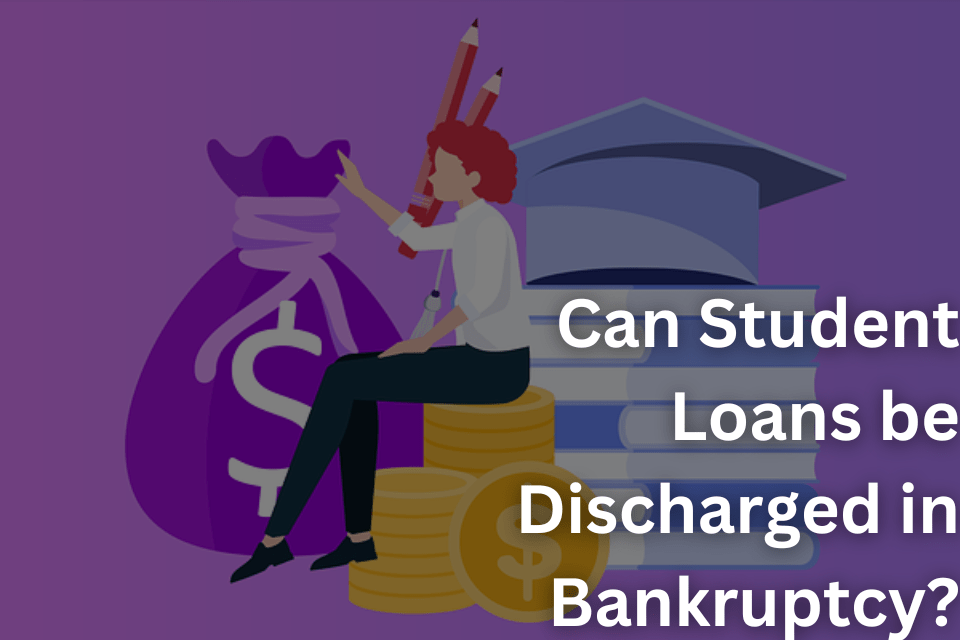As the cost of higher education continues to rise, more and more students are taking out student loans to pay for their education. However, with the increasing cost of education also comes an increase in student loan debt. For many borrowers, this debt can become overwhelming and they may consider filing for bankruptcy as a way to discharge their student loans. But can student loans be discharged in bankruptcy? The answer is not straightforward, and it depends on a variety of factors.
In this article, we will take a comprehensive look at the options for discharging student loans in bankruptcy, including the Brunner test and undue hardship. We will also discuss the pros and cons of discharging student loans in bankruptcy and explore alternative options for managing student loan debt.
The Brunner Test
One way that student loans can be discharged in bankruptcy is through the Brunner test. This test, which was established in the 1987 court case Brunner v. New York State Higher Education Services Corp, is used to determine whether a borrower can demonstrate “undue hardship” in repaying their student loans. To pass the Brunner test, a borrower must meet all three of the following criteria:
- The borrower cannot maintain, based on current income and expenses, a minimal standard of living for themselves and their dependents if forced to repay the loans.
- Additional circumstances exist indicating that this state of affairs is likely to persist for a significant portion of the repayment period of the student loans.
- The borrower has made a good faith effort to repay the loans.
If the borrower can meet all three of these criteria, they may be able to have their student loans discharged in bankruptcy. However, it is important to note that the Brunner test is applied differently by different courts and some courts have a higher standard for passing the test.
Undue Hardship
Undue hardship is a key concept in determining whether student loans can be discharged in bankruptcy. Under the Brunner test, the borrower must demonstrate that they will be facing undue hardship if they are forced to repay their student loans. But what exactly is undue hardship?
Undue hardship is a difficult standard to meet and it is not defined in the bankruptcy code. However, it typically refers to a situation where the borrower is unable to maintain a minimal standard of living while repaying their student loans. This can be due to factors such as a permanent disability, a low income, or a large number of dependents.
Pros and Cons of Discharging Student Loans in Bankruptcy
While discharging student loans in bankruptcy can provide relief for borrowers who are struggling to repay their loans, it is not without its drawbacks. Here are some of the pros and cons of discharging student loans in bankruptcy:
Pros:
- It can provide relief for borrowers who are struggling to repay their loans
- It can help borrowers who are facing undue hardship to get a fresh start
Cons:
- It is a difficult standard to meet and many borrowers will not be able to have their loans discharged
- It can have a negative impact on the borrower’s credit score
- It may not provide long-term relief as the borrower may still face financial challenges after the bankruptcy
Alternative Options for Managing Student Loan Debt
If discharging student loans in bankruptcy is not an option, there are other ways to manage student loan debt. Here are a few alternative options:
- Income-driven repayment plans: These plans base the borrower’s monthly loan payment on their income and family size. This can make the payments more manageable for borrowers who are struggling to repay their loans.
- Deferment and forbearance: These options allow borrowers to temporarily postpone or reduce their loan payments. This can be helpful for borrowers who are experiencing a financial hardship or are returning to school.
- Loan consolidation: This option allows borrowers to combine multiple student loans into one loan with a single monthly payment. This can make it easier to manage multiple loan payments and may result in a lower interest rate.
- Loan forgiveness programs: Some borrowers may qualify for loan forgiveness programs, which can forgive a portion or all of the loan balance. This is typically available to borrowers who work in certain public service or non-profit jobs or meet other qualifications.
Conclusion
In conclusion, the question of whether student loans can be discharged in bankruptcy is not a simple one. The Brunner test and undue hardship standard provide some options for borrowers who are struggling to repay their student loans, but it is a difficult standard to meet. Additionally, discharging student loans in bankruptcy can have negative consequences and may not provide long-term relief. Alternative options such as income-driven repayment plans, deferment, forbearance, loan consolidation, and loan forgiveness programs are also available for borrowers looking for ways to manage their student loan debt. It is important to weigh all the options and consult with a financial advisor or bankruptcy attorney to determine the best course of action.

